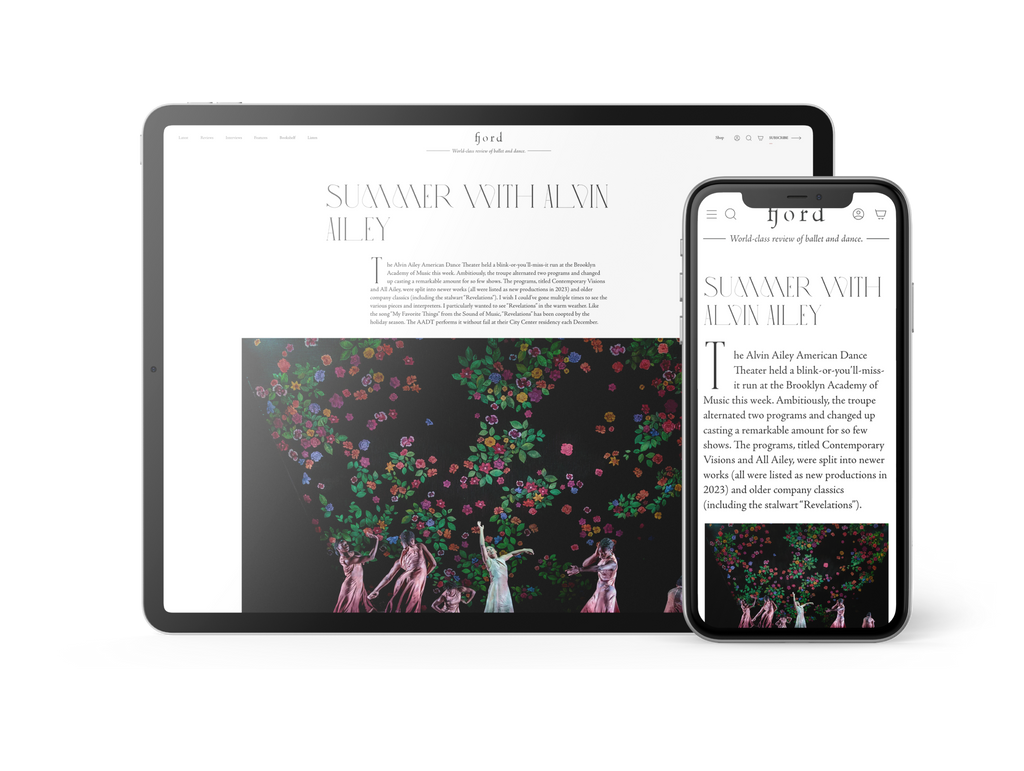In “Figure a Sea,” created in 2016 for Sweden’s Cullberg Ballet, Hay casts 17 dancers adrift on a sparse stage, lights up and wings exposed. The palette is calming and the mood meditative, the cast sweeping the stage in a watercolour of greys, pinks and blues. At first glance it reads like 17 solos happening at once; each dancer inhabits a universe of serene, seemingly improvised gestures. Watch longer, though, and delicate movement patterns emerge: little twirls, level changes, constellations of bodies whirling in orbit, usually away from centre stage. Contact is discreet, limited to light clasps and brushing fingers. Clusters occur, sometimes by gender, sometimes by costume. I’m reminded of starlings in flight, sporadically swarming into shape.
When synthesised music from Laurie Anderson trickles in, the addition is slight enough to forget that the piece began in silence. Like the staging and lighting, the music defies the usual parameters, with electro undercurrents scattered across variously repeated notes, the rhythm elusive. It isn’t these throbs that steer the mood but small outbursts from the dancers: thrown shapes, exaggerated expressions, sprightly leaps that draw a sharp contrast with the quiet tessellations of earlier scenes.
Fittingly understated, the programme notes offer little hint of Hay’s inspiration for the production or the questions guiding it. Going off the ‘What if?’ wellspring for pieces like “Where Home Is,” created earlier this year with Nora, I’d guess the lines of enquiry here include ‘What if we treat peripheral spaces like centre stage?’ and ‘What if stillness was approached as a form of motion?’ Hay herself has called the work “a meditation on seeing,” which gives some context to the pensive nature of the performance, but hardly bridges the conceptual and the aesthetic. What are the dancers communicating with their dramatic gurning? What unites the diverse movements on show? Why devise one scene around a lone dancer muttering into a microphone? Of course, if the idea is to challenge how we perceive choreography, declining to declare any objectives does just that.
It could be an exasperating hour to sit through, but there’s a magnetism to the Cullberg cohort, with their Scandi-cool wash of beards, pixie cuts and septum rings. Well-versed in Hay’s principles of practice—she’s one of three choreographers the company is working with exclusively this year—they radiate diligence in their careful postures and smooth, unpretentious lines. Embraces are loosely held and deeply felt; chirpy vocals are tested out rather than announced. Individuals shine as they stretch and sculpt their limbs, but the group dynamic triumphs, offering an elegant study in energy and form.
With its abstract, opaque composition, “Figure a Sea” draws its audience into a self-conscious loop of engagement. Just when we’re sure Hay is intent on excluding us from its meaning, the provocation of that prospect pulls us back into the fold. We’re immersed even when we feel shut out.









comments